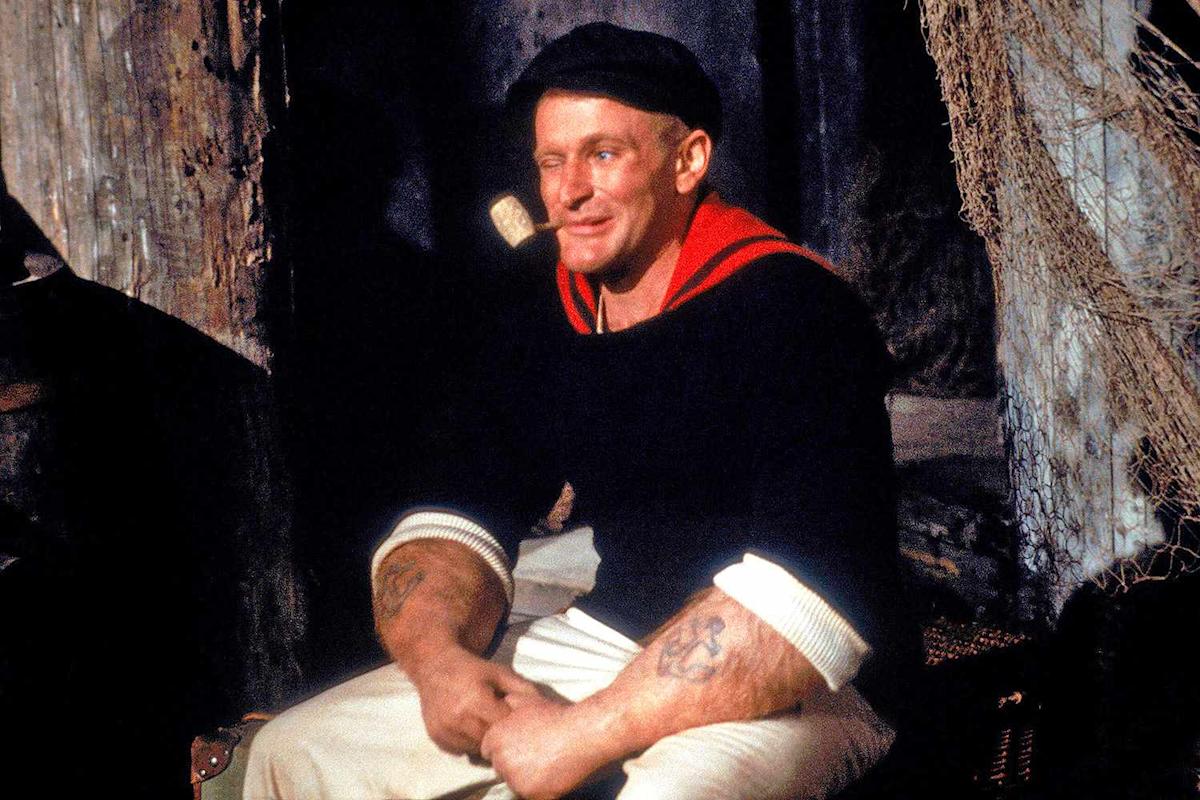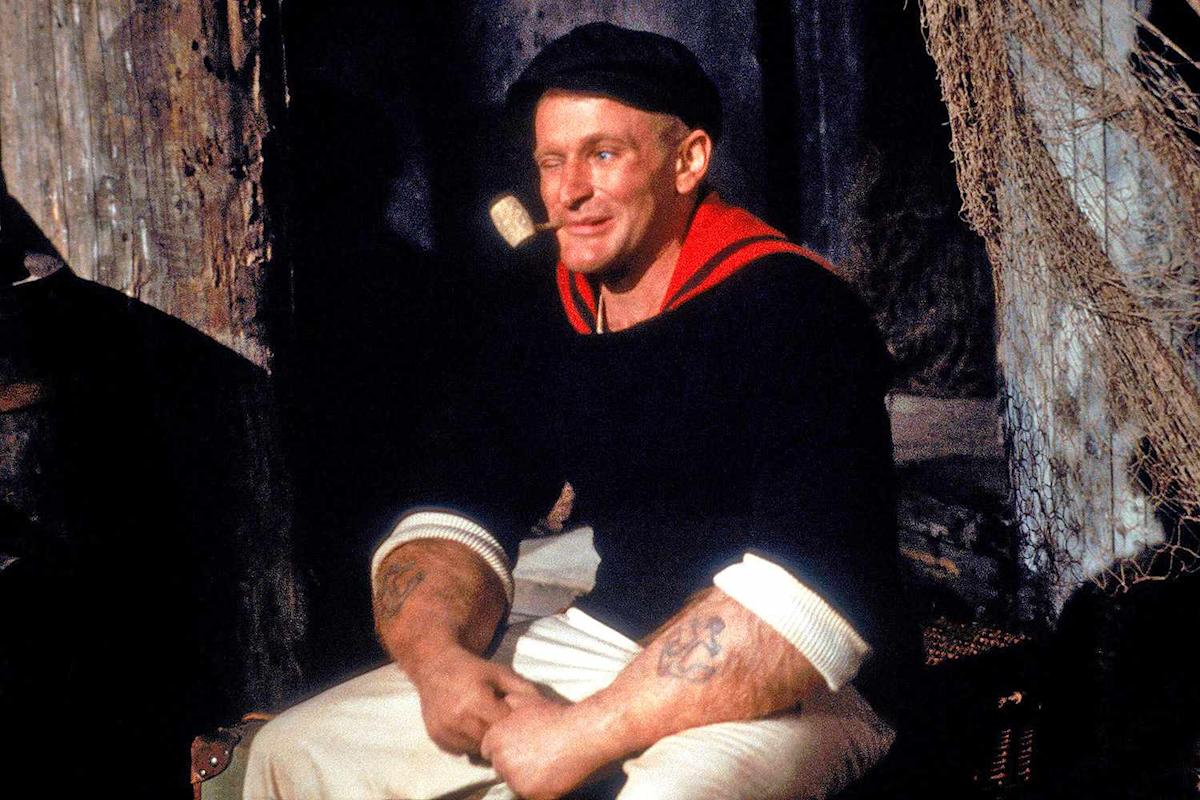## Shiver me timbers! Robin Williams’ Popeye wasn’t just a cinematic oddity, it was a full-blown nautical nightmare.
Remember the 1980s? Big hair, leg warmers, and movies that were… well, let’s just say “unique.” Enter Robin Williams’ take on the iconic sailorman, Popeye. A live-action adaptation brimming with stop-motion animation, spinach-fueled shenanigans, and a cast seemingly fueled by something stronger than Popeye’s green leafy goodness.

Now, a former executive on the set is spilling the beans, revealing that the production wasn’t just a colorful mess, it was a full-blown “coked-up” free-for-all. Forget the spinach, this crew was fueled by something a little more… illicit.

Drugs and Hollywood
A Culture Steeped in Substance
The 1970s in Hollywood was a period of prolific filmmaking, but it was also a time when drug use was rampant. This wasn’t simply a fringe phenomenon; it permeated all levels of the industry, from the studios to the sets to the actors’ personal lives. The accessibility of drugs, coupled with the pressure-cooker environment of show business, created a breeding ground for addiction.
This period saw the rise of notorious drug-fueled sets, with stories circulating about legendary films being made under the influence. While it’s difficult to definitively quantify the impact of drug use on filmmaking during this era, many believe it contributed to a certain creative energy, often described as a “frenetic” or “unpredictable” atmosphere.
A Creative Catalyst or a Destructive Force?
The question of whether drug use ultimately enhanced or hindered filmmaking remains a complex and debated topic. Some argue that the heightened states of consciousness and altered perceptions induced by drugs could lead to unconventional ideas, pushing creative boundaries and resulting in groundbreaking films. Others contend that drug use ultimately led to chaos, instability, and a decline in the quality of filmmaking.
Altman’s Known Tendencies
Embracing Improvisation
Robert Altman, the director of “Popeye,” was known for his unconventional filmmaking style, which often involved extensive improvisation and a collaborative approach. His films frequently featured ensemble casts and allowed actors significant creative freedom, resulting in performances that were often praised for their authenticity and spontaneity.
A Loosely Structured Approach
Altman’s penchant for improvisation likely contributed to the “frenetic” atmosphere described by Barry Diller. His sets were known for being less structured and more conducive to organic creativity, which could have easily spiraled into chaos when compounded by drug use.
A History of Unconventional Projects
Altman’s filmography is filled with projects that pushed boundaries and defied conventional Hollywood norms. This suggests that he was not averse to working in an unconventional or even chaotic environment, which may have made him less likely to interrupt the flow of the “Popeye” set, even amidst reports of drug use.
The Robin Williams Factor
A Force of Nature
Robin Williams, at the height of his comedic powers, was known for his boundless energy, rapid-fire improvisations, and unpredictable performance style. His presence on set undoubtedly added to the frenetic atmosphere. Williams was a natural comedian who thrived on spontaneity, and his energy could be infectious, encouraging others to embrace the moment and improvise freely.
Amplifying the Existing Energy
While it’s impossible to say with certainty whether Williams himself was using drugs during the production of “Popeye,” his energetic and unpredictable style could have amplified the already heightened atmosphere created by Altman’s filmmaking methods and the prevalent drug culture.
A Catalyst for Chaotic Creativity
Williams’ comedic genius, combined with the existing environment of improvisation and drug use, may have created a perfect storm of chaotic creativity. This could have resulted in both brilliant moments and moments of utter absurdity, contributing to the film’s unique and often-discussed tone.
The Film’s Reception
A Critical and Commercial Mixed Bag
“Popeye” received mixed reviews upon its release. While some critics praised its visual style, musical numbers, and Williams’s performance, others found it to be too bizarre, disjointed, and lacking in narrative coherence. The film was a commercial disappointment, failing to recoup its budget.
The Legacy of Controversy
The reports of drug use on the set have undoubtedly contributed to the film’s enduring reputation as a cult classic. While some view it as a flawed but entertaining film, others see it as a cautionary tale about the dangers of drug use in the film industry.
The Enduring Appeal of the Film
A Visually Striking and Uniquely Comedic Experience
“Popeye” remains a visually striking film, thanks in part to its distinctive costumes, sets, and makeup. The film’s use of music and dance also adds to its unique charm. Williams’s energetic portrayal of Popeye is undeniably entertaining, even if the film itself is uneven.
A Nostalgia Factor
For many who grew up watching “Popeye” in their childhood, the film holds a nostalgic appeal. It evokes memories of a simpler time and serves as a reminder of the unique brand of comedy that Robin Williams brought to the big screen.
A Reminder of Hollywood’s Dark Side
Acknowledging the Human Cost
The stories surrounding the making of “Popeye” serve as a reminder that the glitz and glamour of Hollywood often masks a darker reality. Drug addiction has ravaged the lives of countless individuals in the entertainment industry, and it’s important to acknowledge the human cost of this epidemic.
Learning from the Past
By examining the history of drug use in Hollywood, we can gain a better understanding of the challenges that faced filmmakers and actors during this era. It’s also an opportunity to learn from past mistakes and work towards creating a healthier and more supportive environment for those working in the entertainment industry.
Conclusion
The Turbulent Tale of Robin Williams’ Popeye: A Cautionary Look Back
In a shocking revelation, a former executive has come forward to share the sordid tale of Robin Williams’ ill-fated 1980 musical comedy, Popeye. The behind-the-scenes story paints a picture of a chaotic film set, where substance abuse ran rampant and creativity was fueled by excess. According to the exec, Williams’ antics were merely the tip of the iceberg, with the entire cast and crew succumbing to a culture of substance abuse. This harrowing account serves as a stark reminder of the dangers of unchecked addiction and the importance of prioritizing mental health in the entertainment industry.
The significance of this story extends far beyond the confines of a single film set. It serves as a cautionary tale about the consequences of unchecked excess and the importance of accountability in the entertainment industry. The fact that a film of this magnitude was marred by such a toxic environment raises questions about the responsibility of producers, directors, and studios to create a safe and healthy working environment. As we look to the future, it’s essential that we prioritize mental health and wellness in the entertainment industry, recognizing that the well-being of creatives is paramount to producing high-quality content.
As we reflect on the tumultuous tale of Popeye, we’re reminded that the entertainment industry is a complex and often fragile ecosystem. It’s a world where creativity and excess can often go hand-in-hand, but where the lines between inspiration and addiction can quickly become blurred. As we move forward, it’s crucial that we prioritize responsible storytelling, healthy working environments, and above all, the well-being of our creatives. The legacy of Popeye serves as a stark reminder that the true cost of chasing the high of creative expression can be devastating, and it’s up to us to create a more sustainable and compassionate industry for all.